Using the Azure Queue Storage Destination Component
The Azure Queue Storage Destination Component is an SSIS data flow pipeline component that can be used to send messages to an Azure Queue Storage queue. There are three pages of configuration:
- General
- Columns
- Error Handling
General Page
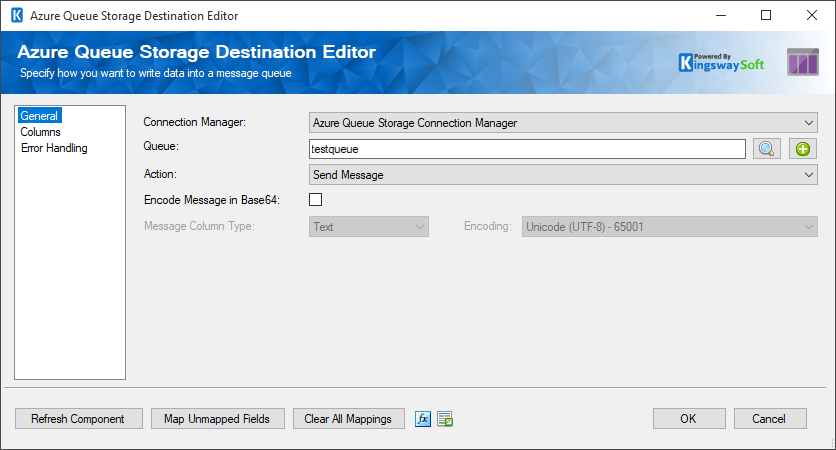
- Connection Manager
The destination component requires an active connection to Azure Queue Storage. The Connection Manager drop-down will show a list of all Azure Queue Storage Connection Managers that have been created in the current SSIS package.
- Search
-
Click the search button (or press Ctrl + F on your keyboard) to launch the Select Queue dialog.
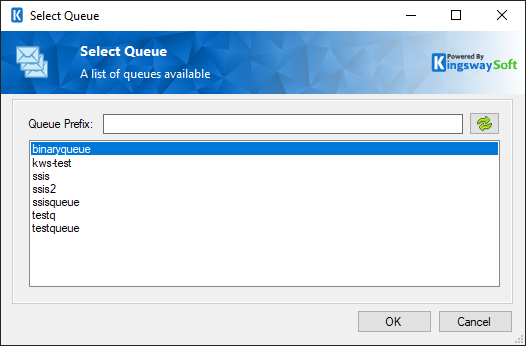
- Create Queue
-
Click the "+" button next to the Search button would open up the Create Queue dialog.
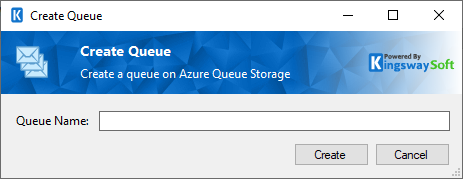
- Queue
A list of queues will be presented from those available in Azure Queue Storage. Messages will be written to this queue.
- Action
-
The Action specifies how you want to write to the Azure Queue Storage queue service. There are 4 Actions:
- Send Message
- Clear Message
- Delete Message
- Update Message
- Encode Message in Base64
-
You can enable this option to encode the input message data into the Base64 encoded string.
- Message Column Type
-
The Message Column Type allows you to specify whether your input message data is binary or text. when performing theBase64 encoding. There are two different modes available for Message column types: Binary and Text. The default setting is Text.
- Encoding
-
The encoding will be used to convert the message body to a byte array when encoding the message into the Base64 encoded string. This option is only available when the Message Column Type is Text.
- Refresh Component Button
-
Clicking the Refresh Component button causes the component to retrieve the latest metadata and update each field to its most recent metadata. It will remove any custom fields that have been added to the columns page.
- Map Unmapped Fields Button
-
By clicking this button, the component will try to map any unmapped attributes by matching their names with the input columns from upstream components. This is useful when your source component has recently added more columns, in which case you can use this button to automatically establish the association between input columns and unmapped destination attributes.
- Clear All Mappings Button
-
By clicking this button, the component will reset all your mappings in the destination component.
- Expression fx Icon
-
Click the blue fx icon to launch SSIS Expression Editor to enable dynamic updates of the property at run time.
- Generate Documentation Icon
-
Click the Generate Documentation icon to generate a Word document that describes the component's metadata including relevant mapping, and so on.
Columns Page
The Columns page allows you to map the columns from upstream components to destination attributes.
On the Columns page, you will see a grid as shown below.
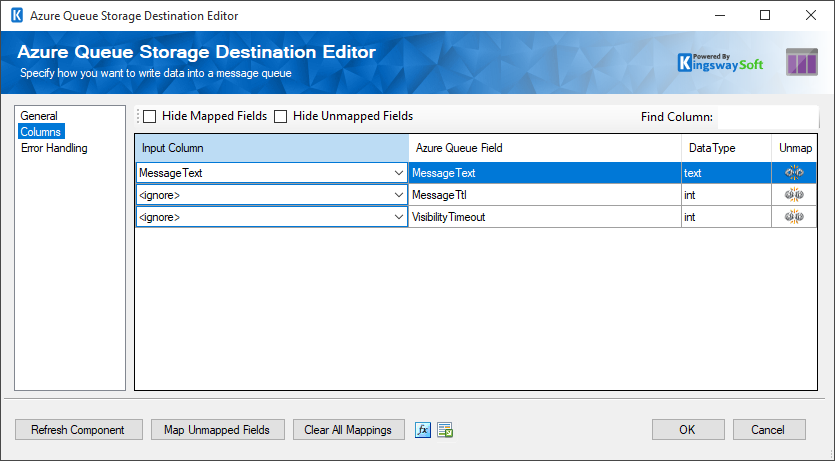
- Input Column: You can select an input column from an upstream component here.
- Azure Queue Field: The attribute/field that you want to write data to.
- Data Type: This column indicates the type of value for the current attribute.
Error Handling Page
The Error Handling page allows you to specify how errors should be handled when they happen.
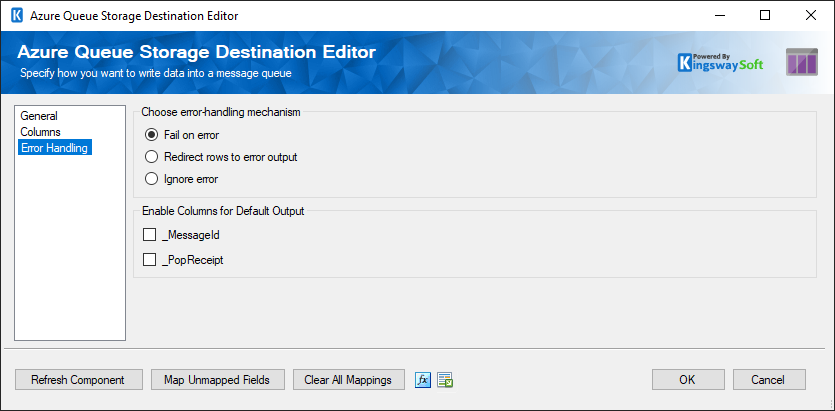
There are three options available:
1. Fail on error
2. Redirect rows to error output
3. Ignore error
When the Redirect rows to the error output option is selected, rows that failed to write to Azure Queue Storage will be redirected to the 'Error Output' of the Destination Component. As indicated in the screenshot below, the green output connection represents rows that were successfully written, and the red 'Error Output' connection represents rows that were erroneous. The 'AzureQueueStorageErrorMessage' output column found in the 'Error Output' may contain the error message that was reported by Azure Queue Storage or the component itself.

Note: Use extra caution when selecting Ignore error option, since the component will remain silent for any errors that have occurred.
- Enable columns for default output
- _MessageId: Contains the newly created Message ID, which you can use to write to log or further process using additional data flow components.
- _PopReceipt: This output will return the pop receipt value of the message. This option is available when Send Message or Update Message is selected in Action.

